
Shannen Doherty, known for her roles on the wildly popular series “Beverly Hills, 90210” and on the witchcraft fantasy “Charmed,” has died after being diagnosed with breast cancer in 2015. She was 53.
“It is with a heavy heart that I confirm the passing of actress, Shannen Doherty,” Doherty’s publicist Leslie Sloane said in a statement. “On Saturday, July 13, she lost her battle with cancer after many years of fighting the disease. The devoted daughter, sister, aunt and friend was surrounded by her loved ones as well as her dog, Bowie. The family asks for their privacy at this time so they can grieve in peace.”
Doherty rose to fame in 1990 as the fresh-faced brunette Brenda Walsh on Fox’s “Beverly Hills, 90210.” Along with her twin brother Brandon, played by Jason Priestly, the Walshes were the classic fish-out-of-water family that had recently moved from Minnesota to Beverly Hills and were constantly amazed at the antics of the L.A. rich kids.
The romance between Brenda and Dylan, played by Luke Perry, spawned controversy in the first season for the storyline where Brenda considers losing her virginity. Their later breakup, when Dylan hooked up with her best friend Kelly, played by Jennie Garth, was also big news, and the show was considered groundbreaking in its willingness to address topics like drug abuse and racism.
The show was a massive hit, and with its success came an inordinate amount of scrutiny and gossip surrounding the cast, including teen-aged Doherty. Though the show had started out with Garth’s Kelly as the less likable character, the perception soon changed and Brenda become the cast member everyone loved to hate on. She was labeled a diva in the press and there was even a pre-internet newsletter called “I Hate Brenda.” Doherty appeared in 111 episodes before leaving the series at the end of season four, amid reports of friction with other cast members, particularly Garth.

By the time the show was rebooted two more times, everyone had mellowed with age and Doherty returned as Brenda in the 2008 revival “90210” for one season and in the later revival 2019 “BH90210.”
After her stormy departure from “Beverly Hills, 90210,” Doherty found her footing on “Charmed,” the supernatural drama following three sisters who discover they are witches and must work together to fight evil. She played the oldest of the three sisters, Prue Halliwell, alongside Alyssa Milano and Holly Marie Combs. In 2000 and 2001, she directed three episodes of the series — “Be Careful What You Witch For,” “The Good, The Bad, and The Cursed,” and “All Hell Breaks Loose,” the last episode she appeared in. Her character was killed off when she left the series at the end of the third season.
Born in Memphis, Tenn., Doherty moved to Los Angeles with her family as a child and got her start at age 10 with a role on the series “Father Murphy.” Michael Landon saw her in the series and cast her as Jenny Wilder in “Little House on the Prairie” at age 11.
Doherty then had a recurring role on the family series “Our House” with Wilfred Brimley,
In feature films, she appeared in another teen classic, “Heathers,” as well as in “Girls Just Want to Have Fun” and Kevin Smith’s “Mallrats” and “Jay and Silent Bob Strike Back.”
Among the other shows she appeared on were “North Shore,” and “Riverdale” as well as in a number of TV movies.

In 2006, she produced a reality show, “Breaking Up With Shannen Doherty,” where she helped people in relationship peril who wanted to get out but couldn’t do it on their own, and later appeared in another reality show, “Off the Map With Shannen and Holly.”
Doherty was diagnosed with breast cancer in February 2015, and in 2017 said she was in remission. But by 2019 the cancer had returned and spread. She continued working, with roles in TV movies including “Dying to Belong” and “List of a Lifetime.” Doherty also hosted a popular podcast, “Let’s Be Clear With Shannen Doherty,” in which she discussed her career and talked frankly about how breast cancer had impacted her life.
In June 2023, she said she had been receiving radiation for cancer that had spread to her brain.
She was briefly married to George Hamilton’s son Ashley Hamilton and poker player Rick Salomon, and in 2011 she married photographer Kurt Iswarienko. They filed for divorce in 2023.
Cinco anos após a morte da minha esposa, levei minha filha ao casamento da minha melhor amiga. Quando vi a noiva, minha filha perguntou: “Papai, por que você está chorando?”
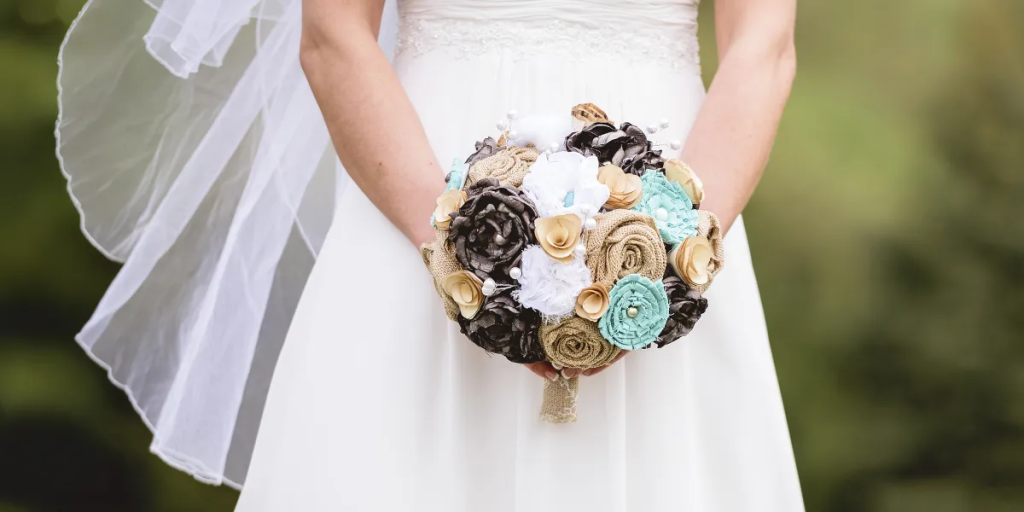
Cinco anos depois de perder minha esposa, minha filha e eu fomos ao casamento do meu melhor amigo. Mas meu mundo desmoronou quando ele levantou o véu da noiva. Enquanto minha filha sussurrava: “Papai, por que você está chorando?”, a noiva me olhou nos olhos — e naquele instante, tudo desmoronou.
Eu nunca planejei ir àquela festa. Meu amigo Mark teve que me arrastar até lá, prometendo que isso “me tiraria da minha depressão”.
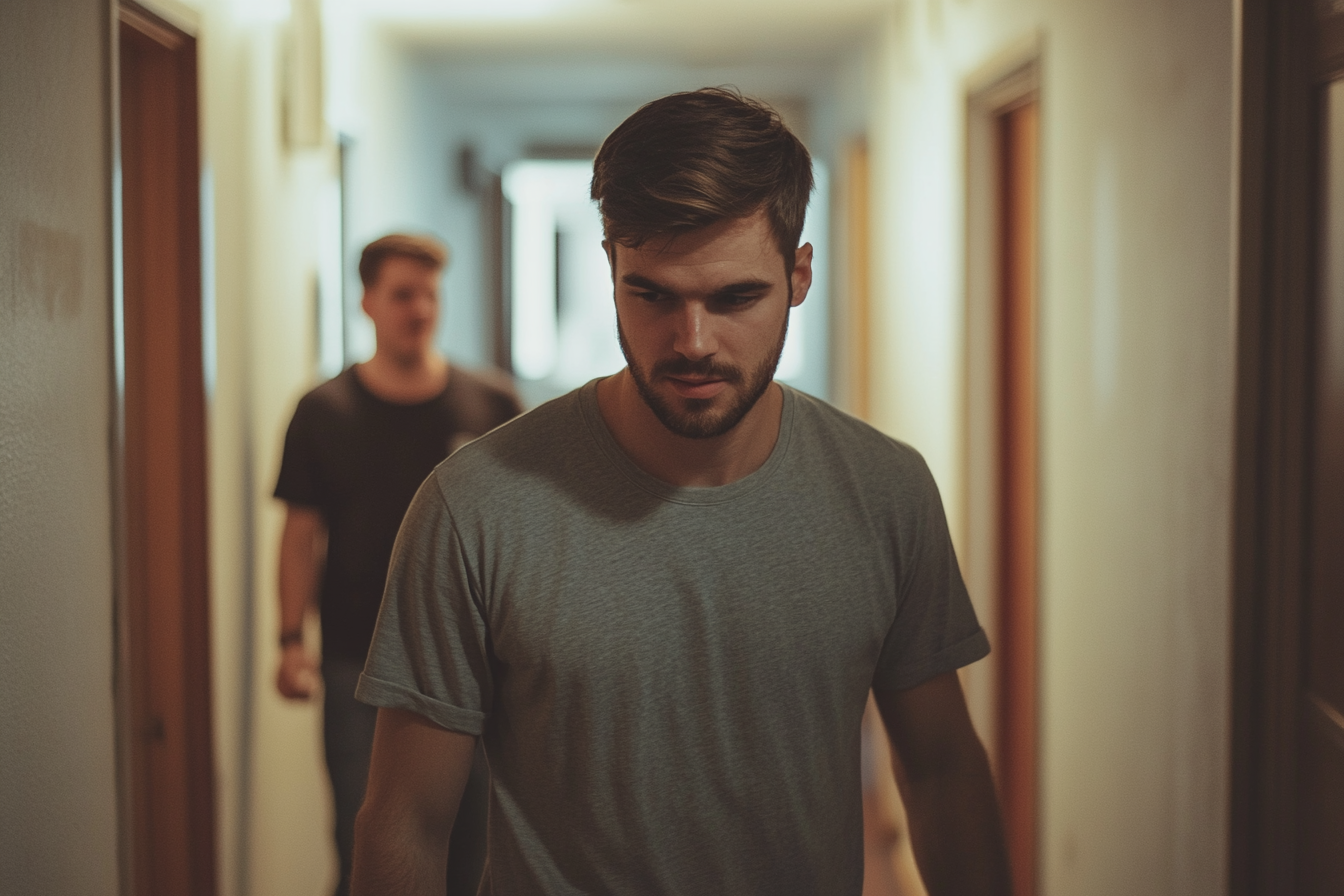
Dois homens caminhando pelo corredor de um prédio de apartamentos | Fonte: Midjourney
Eu estava trabalhando em turnos dobrados no canteiro de obras a semana toda, e meu corpo parecia que concreto havia substituído meus músculos.
“Só uma hora”, disse Mark, praticamente me empurrando pela porta de algum apartamento no centro da cidade. “Então você pode ir para casa e ser um eremita de novo.”
Engraçado como os maiores momentos da vida acontecem quando você menos espera.
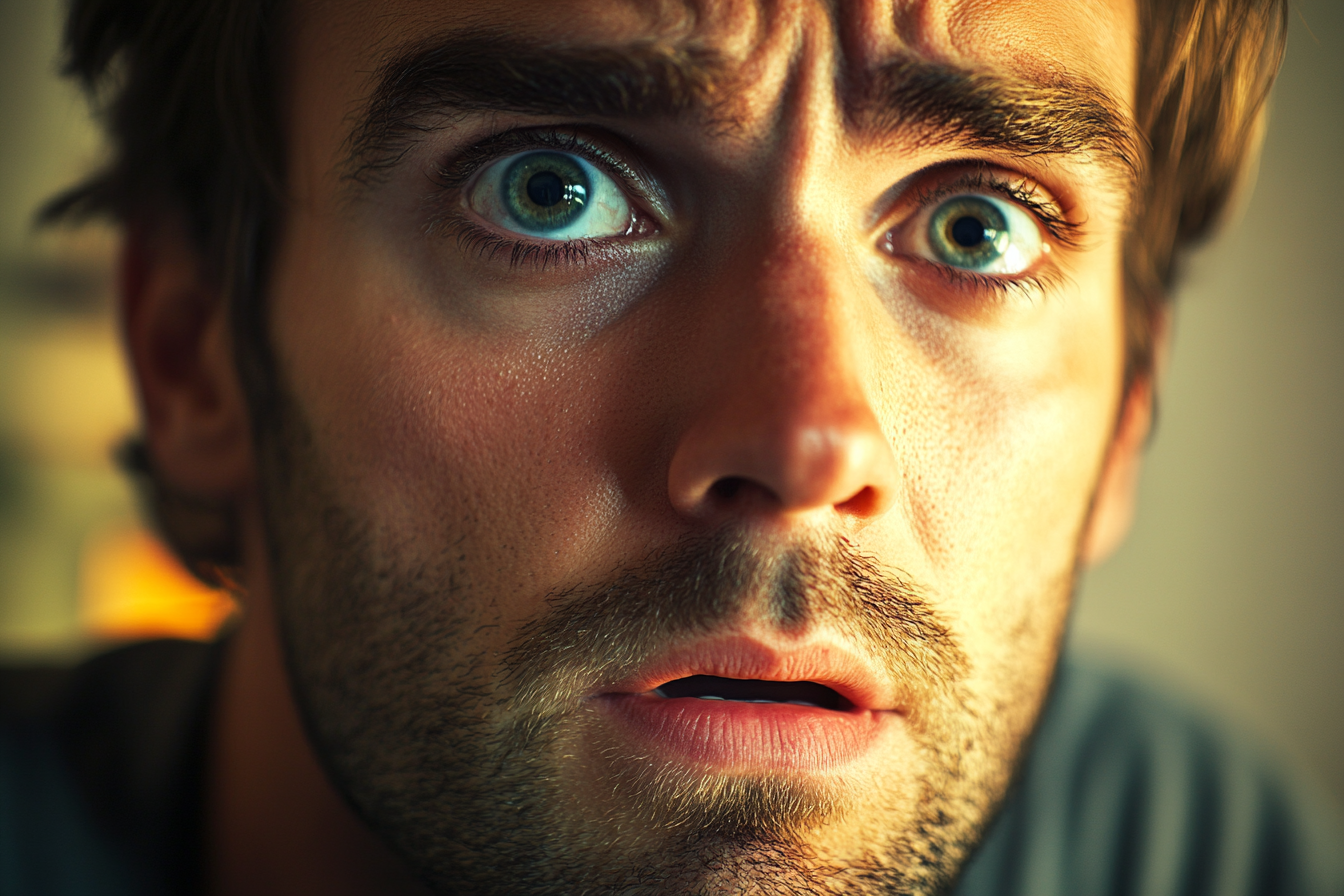
Um homem olhando incrédulo | Fonte: Midjourney
A festa estava cheia de pessoas que não pareciam ter levantado nada mais pesado do que uma taça de martini. Eu me senti deslocado com meu jeans surrado e minha camiseta desbotada.
Mas foi então que vi Natalie.
Ela também não deveria estar lá. Descobri depois que ela estava apenas deixando algo para uma amiga.

Uma mulher em um apartamento com decorações ao fundo | Fonte: Midjourney
Nossos olhares se encontraram do outro lado da sala, e algo se encaixou. Faíscas, conexão, como você quiser chamar; eu sabia que a queria na minha vida.
“Quem é essa?”, perguntei a Mark, acenando para ela.
Ele seguiu meu olhar e assobiou baixo. “Natalie. Não perca seu tempo, cara. A família dela é dona de metade da cidade.”
Mas eu já estava caminhando em sua direção.
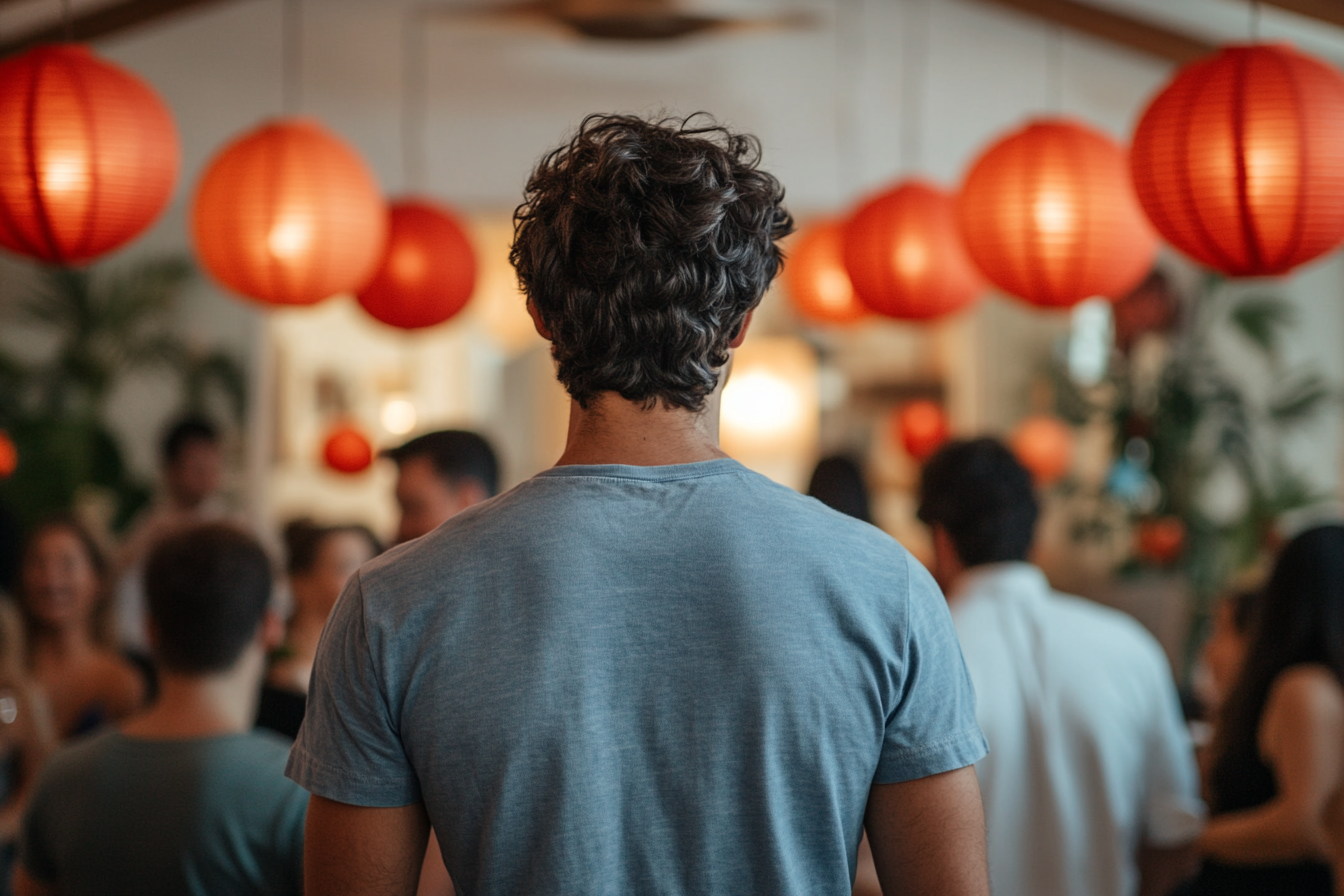
Um homem caminhando entre os convidados em uma festa em casa | Fonte: Midjourney
Ela sorriu quando me aproximei, e aquele sorriso me atingiu como uma bola de demolição.
“Eu sou Jake”, eu disse, estendendo a mão.
“Natalie”, ela respondeu, sua voz suave, mas confiante. Sua mão era pequena na minha, mas seu aperto era firme. “Você parece tão confortável aqui quanto eu.”
Conversamos por horas naquela noite.

Duas pessoas conversando | Fonte: Midjourney
Ela não era o que eu esperava (nada de atitude de princesa fiduciária, apenas cordialidade e curiosidade genuínas) e, no final da noite, eu sabia que estava em apuros.
“Meus pais odiariam você”, ela disse enquanto eu a acompanhava até o carro, o luar refletindo em seus cabelos escuros.
“Isso é um problema?”, perguntei.

Uma mulher sorrindo para alguém | Fonte: Midjourney
Ela olhou para mim com aqueles olhos que pareciam ver através de mim. “Provavelmente. Mas acho que não me importo.”
Seis meses depois, nos casamos. Os pais dela não foram ao casamento. Eles a cortaram completamente: nenhum fundo fiduciário, nenhuma férias em família, nada.
Mas Natalie apenas apertou minha mão e disse: “Não me importo com o dinheiro. Eu só quero você.”
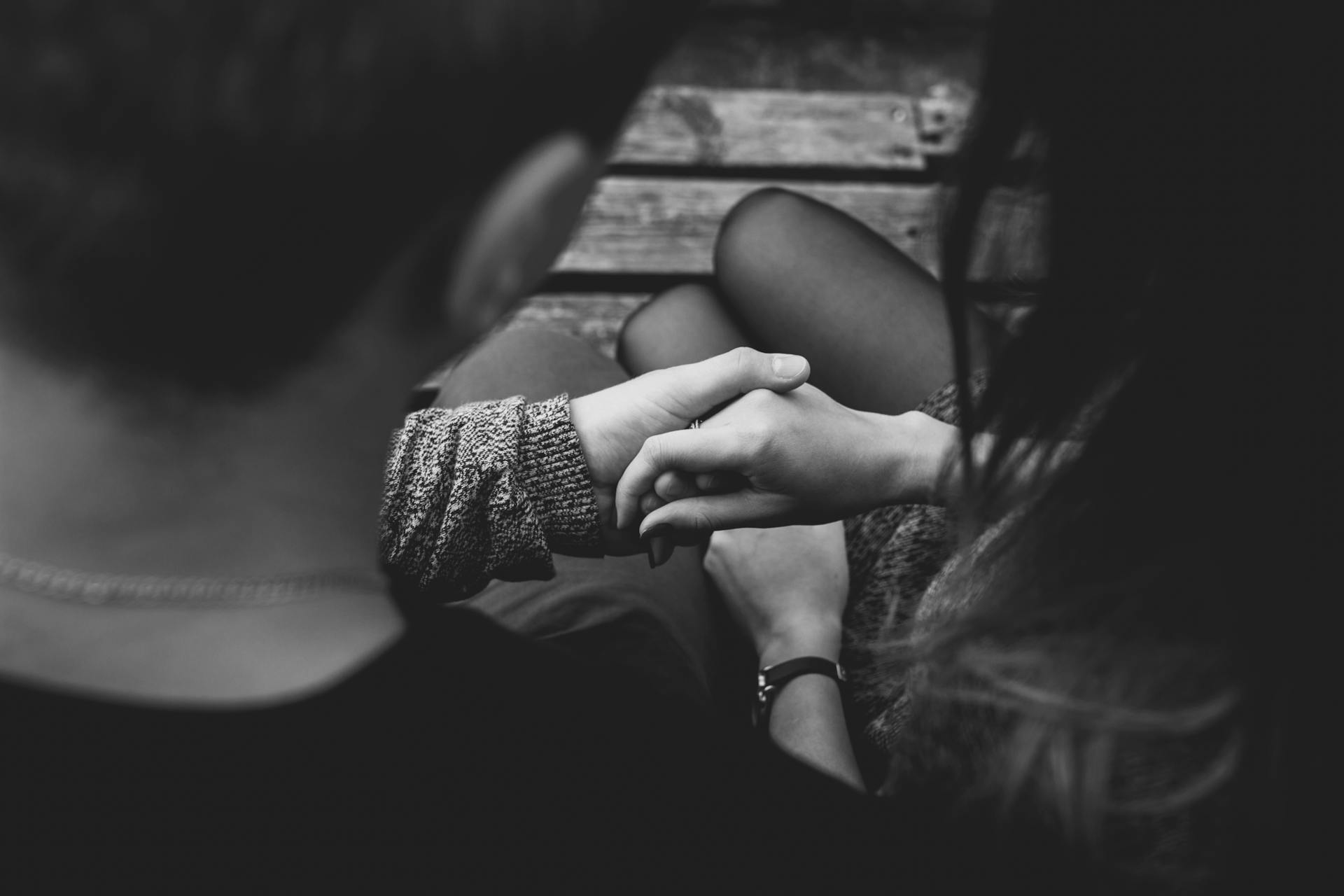
Um casal de mãos dadas | Fonte: Pexels
Por um tempo, foi o suficiente.
Nós nos mudamos para um pequeno apartamento de dois quartos. Eu trabalhava na construção durante o dia e fazia aulas noturnas de design arquitetônico. Natalie conseguiu um emprego em uma galeria local. Estávamos felizes, ou assim eu pensava.
Então Emma nasceu e algo mudou.
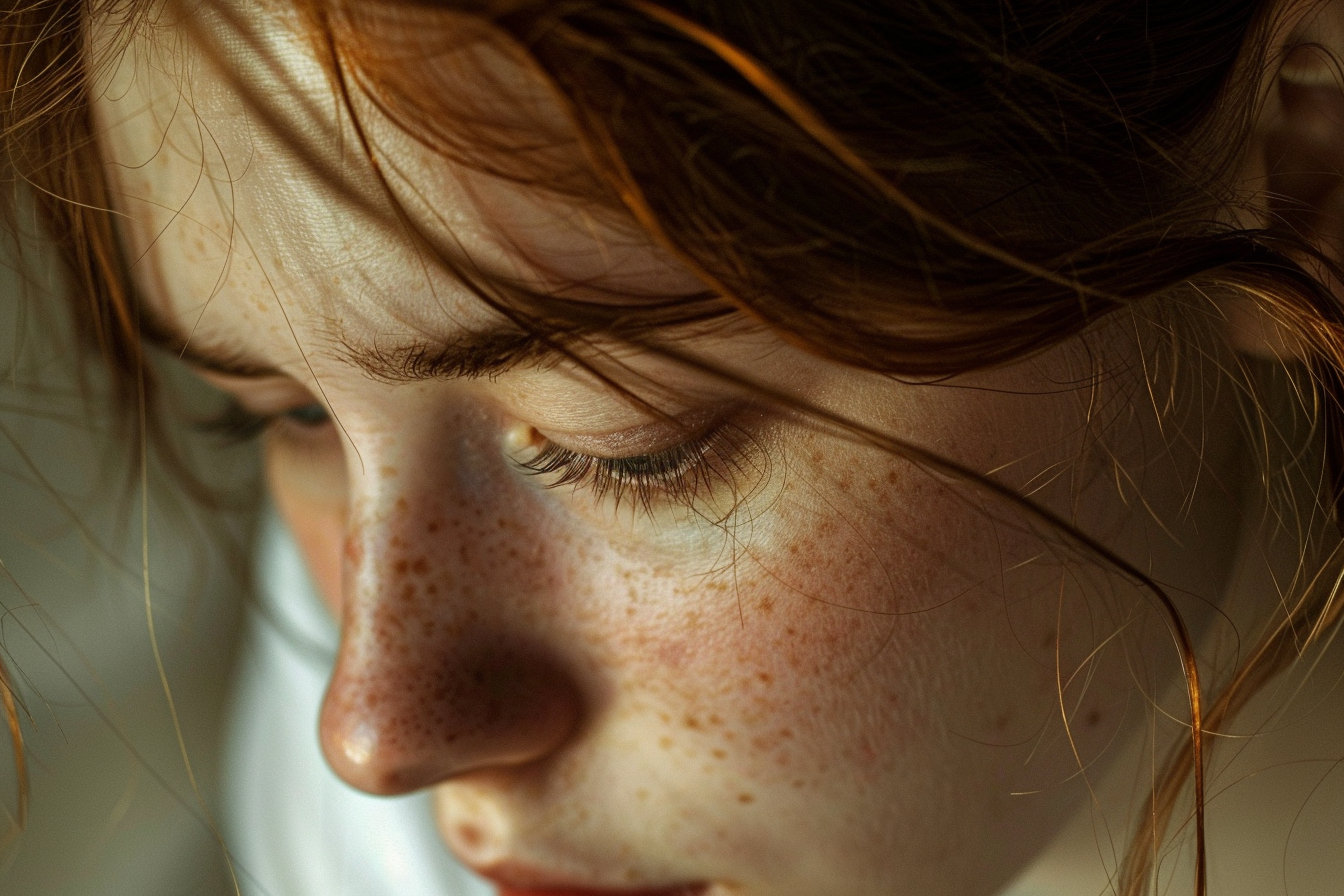
Uma mulher com um olhar distante nos olhos | Fonte: Midjourney
O calor nos olhos de Natalie começou a desaparecer. Ela começou a comparar nossa vida com a que ela havia deixado para trás.
“Minha colega de quarto da faculdade acabou de comprar uma casa de férias nos Hamptons”, ela mencionou uma noite enquanto comíamos macarrão com queijo em nossa pequena mesa de cozinha. Emma estava dormindo em seu berço ao nosso lado.
“Que legal”, eu disse, sem tirar os olhos das plantas que estava estudando.
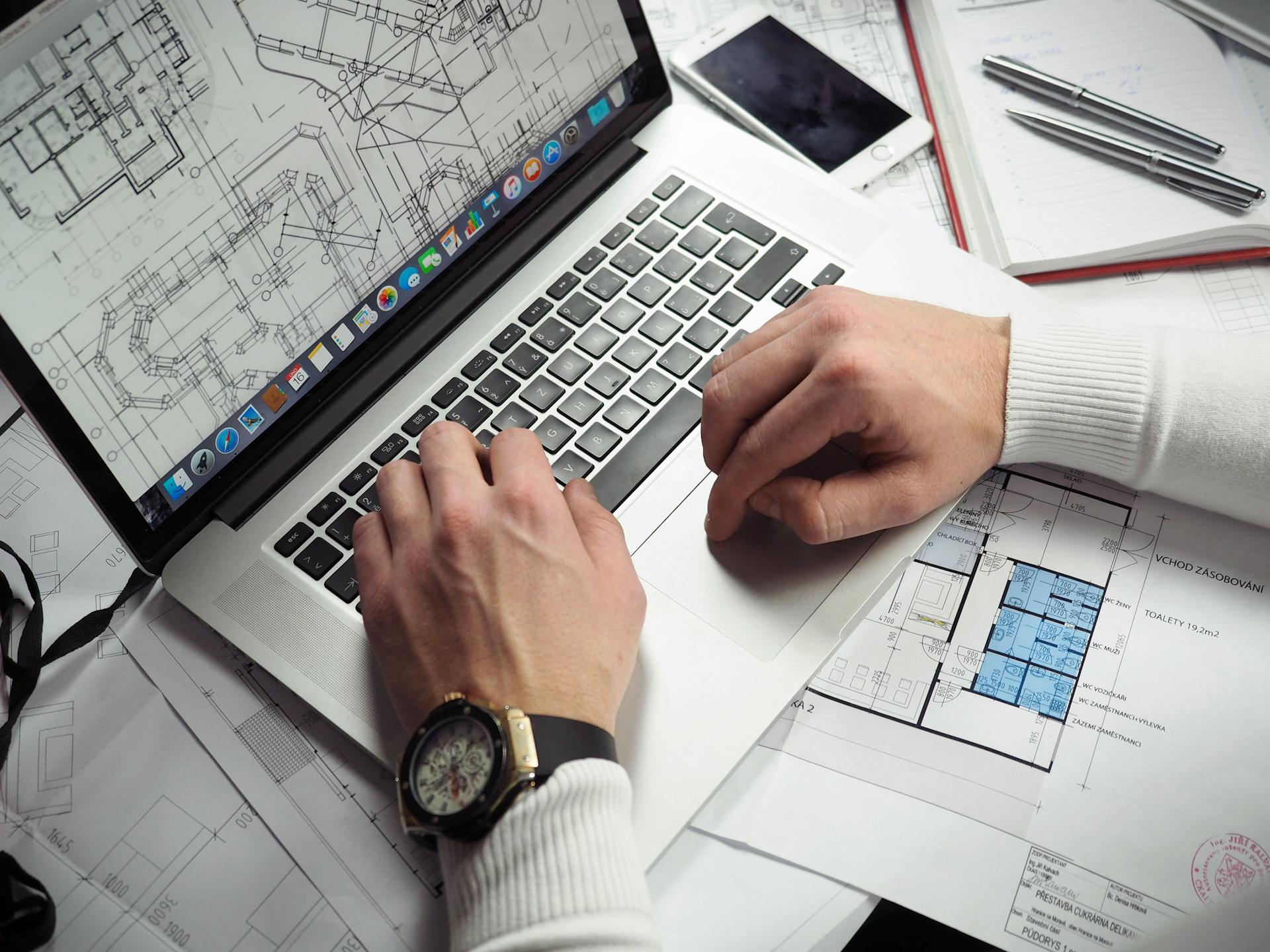
Um homem estudando plantas | Fonte: Pexels
“Ela nos convidou para uma visita. Tive que dizer a ela que não tínhamos dinheiro para a viagem.”
Senti a dor das palavras dela. “Estamos bem, Nat. As coisas vão melhorar.”
“Quando?” ela perguntou, sua voz afiada. “Quando Emma estiver na faculdade? Quando estivermos aposentados? Estou cansada de esperar por ‘melhor’, Jake.”
Nossas discussões se tornaram mais frequentes.

Um casal tendo uma conversa intensa | Fonte: Midjourney
Ela odiava fazer orçamentos e desprezava nossa vida humilde.
“Não foi para isso que me inscrevi”, ela dizia.
Como se eu a tivesse enganado de alguma forma. Como se o amor fosse pagar as contas.
“Você sabia quem eu era quando se casou comigo”, lembrei-a durante uma briga particularmente brutal.
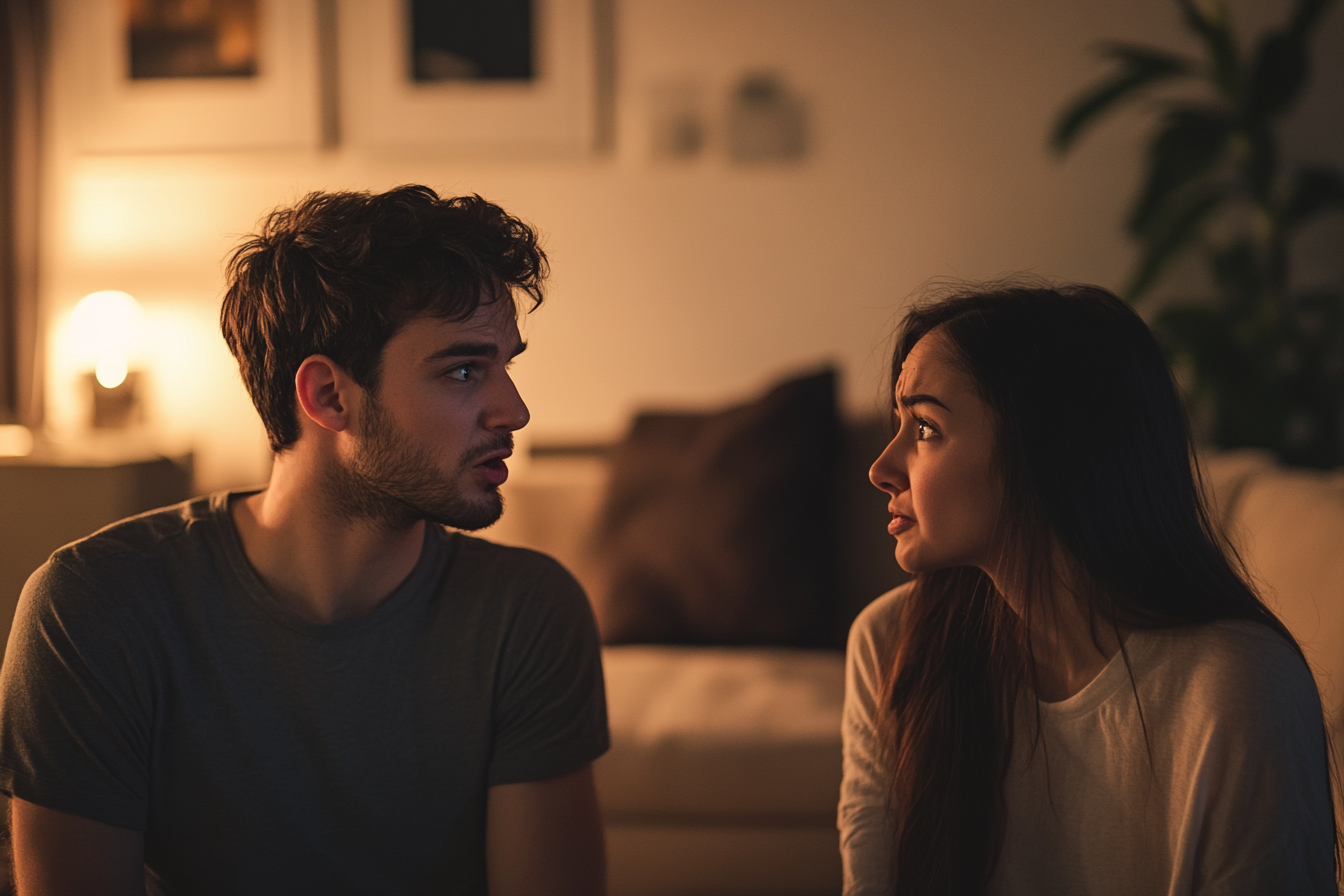
Um casal discutindo | Fonte: Midjourney
“Talvez esse fosse o problema”, ela disse friamente. “Achei que você já estaria mais agora.”
No dia seguinte, cheguei cedo do trabalho, planejando surpreendê-la com flores. O apartamento estava silencioso.
A mala de Natalie e todas as suas coisas desapareceram.
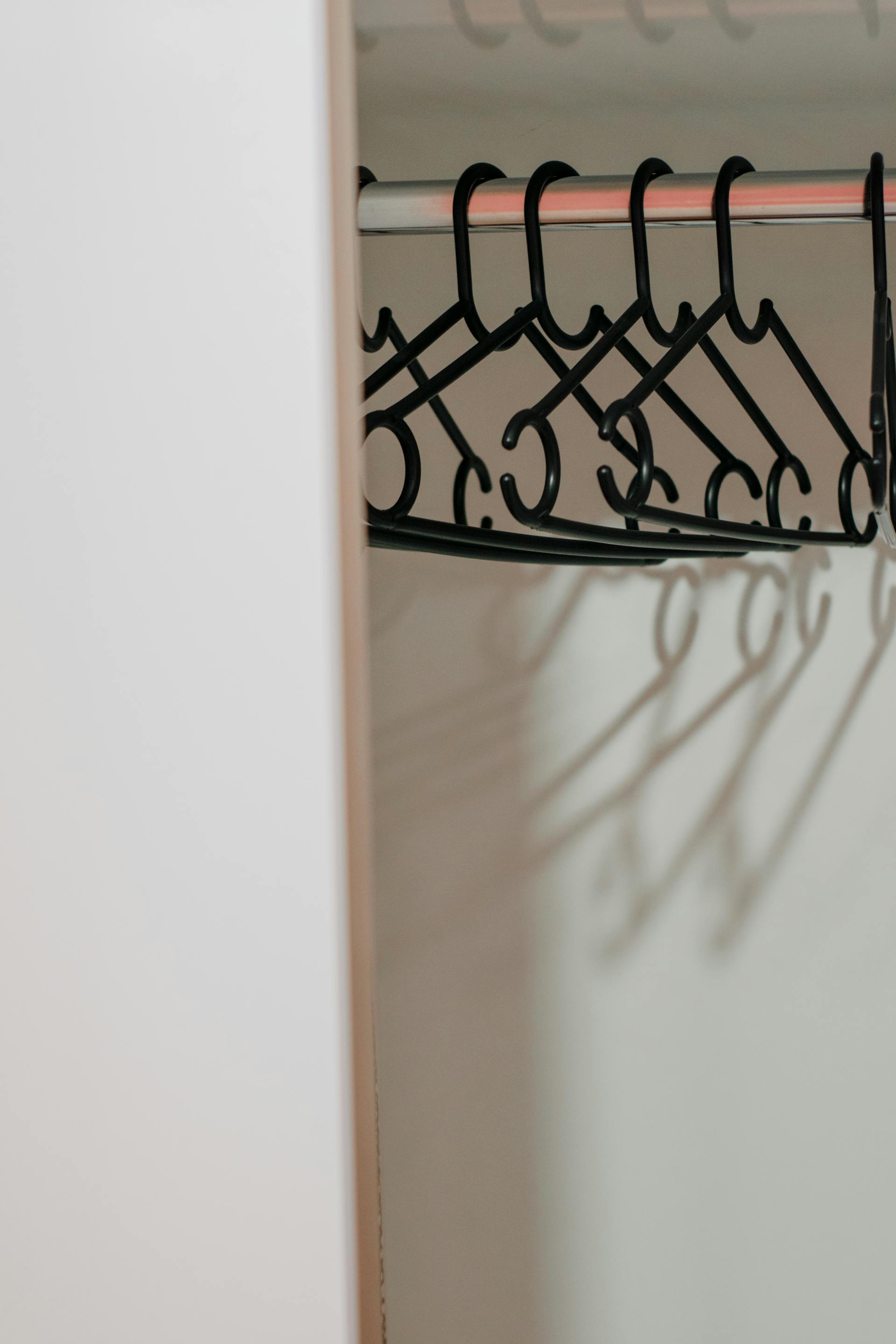
Cabides em um armário | Fonte: Pexels
No berço, encontrei um bilhete:
Quero o divórcio. Sinto muito, mas nosso casamento foi um erro. Deixei Emma com a Sra. Santiago no fim do corredor. Você pode ficar com ela.
Liguei para o telefone dela umas cem vezes. Nenhuma resposta. Dirigi até a mansão dos pais dela, desesperado e com os olhos arregalados.

Uma casa de luxo | Fonte: Pexels
O segurança não me deixou passar pelo portão.
“Você não é bem-vindo aqui, senhor”, ele me disse, parecendo quase arrependido.
“Por favor, só preciso falar com Natalie”, implorei.
“Senhor, preciso que o senhor saia do local.”
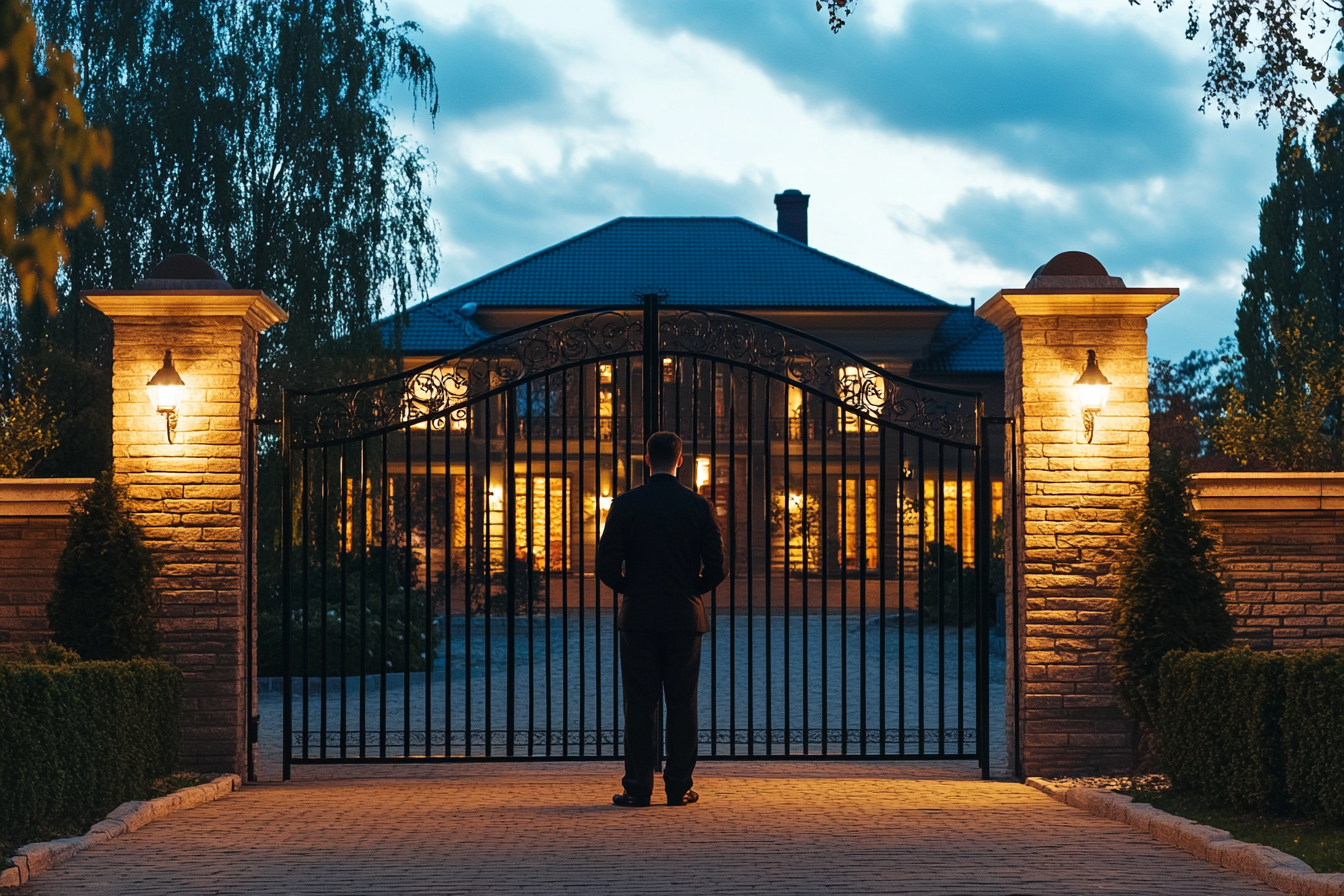
Um guarda de segurança em pé em frente a um portão | Fonte: Midjourney
Dois dias depois, recebi os papéis do divórcio. Natalie havia assinado a cessão de seus direitos parentais para Emma.
Os advogados de seu pai lidaram com tudo com eficiência brutal.
Então veio o golpe final.
Seis meses depois que ela foi embora, liguei para a casa dos pais dela uma última vez.

Um homem fazendo uma ligação telefônica | Fonte: Midjourney
“Ela se foi”, disse sua mãe, com a voz monótona. “Natalie morreu em um acidente de carro. Não ligue mais. Você não significava nada para ela.”
A linha caiu.
Desabei no chão da cozinha, soluçando até que Emma acordou chorando também.
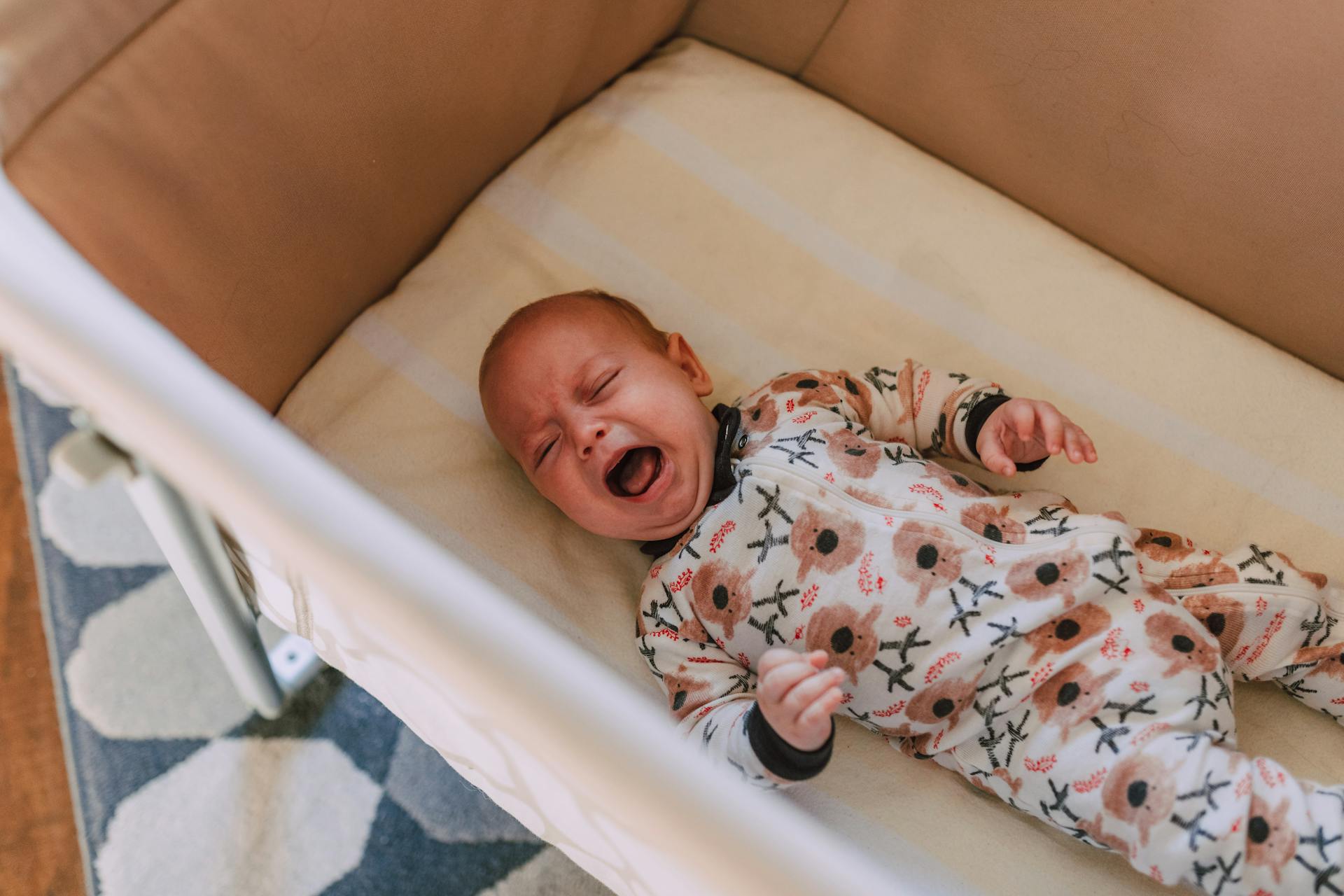
Um bebê chorando em um berço | Fonte: Pexels
Eles nem me deixaram ver o túmulo dela. Ela foi apagada da minha vida como se nunca tivesse existido.
Eu me joguei no trabalho e na criação de Emma. Terminei meu curso e comecei a projetar casas em vez de apenas construí-las. As pessoas notaram meu talento.
Em três anos, eu estava comandando minha própria empresa. Emma cresceu e se tornou uma garotinha inteligente e feliz, que parecia muito com a mãe.

Uma garota olhando para alguém | Fonte: Midjourney
Cinco anos se passaram. A vida continuou e a dor diminuiu para uma dor ocasional.
Então chegou o convite.
Stefan, meu melhor amigo de alguns anos atrás, estava se casando. Nós lutamos para manter contato depois que ele entrou para o exército, mas agora ele me queria em seu casamento.
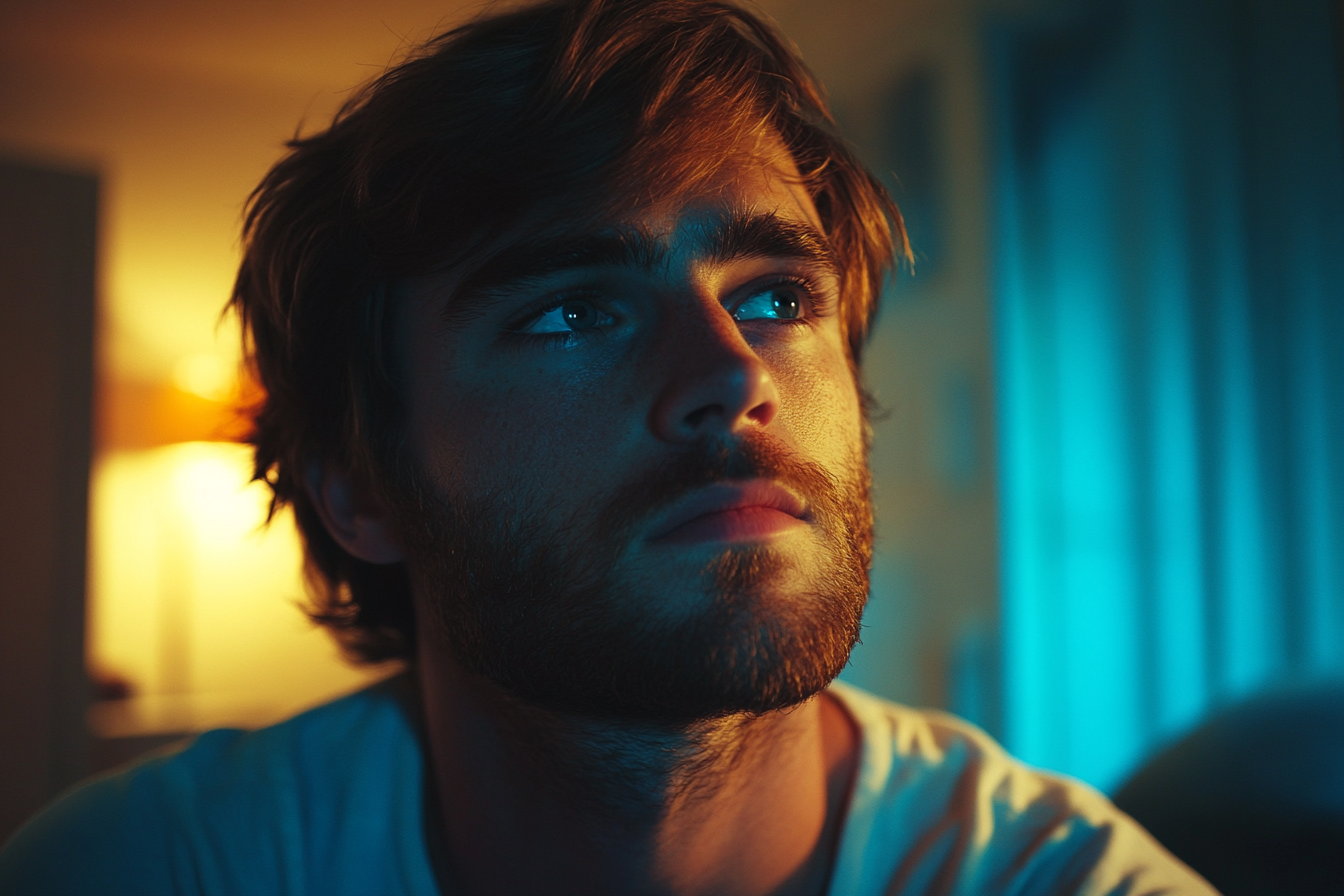
Um homem pensativo | Fonte: Midjourney
“O que você acha, Em? Devemos ir ver o tio Stefan se casar?”, perguntei à minha filha enquanto ela coloria.
“Haverá bolo?” ela perguntou séria.
Eu ri. “Certamente haverá bolo. Um grande e chique.”
“Então devemos ir”, ela decidiu, retornando à sua obra-prima.

Uma menina colorindo uma imagem | Fonte: Pexels
O casamento foi em um resort à beira-mar, todo flores brancas e brisas do oceano. Stefan me abraçou forte quando chegamos.
“Cara, olha só você! Todo crescido e bem-sucedido”, ele disse, socando meu braço de leve. “E essa linda jovem deve ser Emma.”
Emma sorriu timidamente.

Uma garota sorrindo timidamente | Fonte: Midjourney
A cerimônia foi linda.
Os convidados encheram as cadeiras brancas na praia. Emma sentou-se ao meu lado, balançando os pés e brincando com a flor que eu tinha enfiado em seu cabelo.
A música começou e todos se levantaram.
A noiva caminhou até o altar com o rosto velado.

Um casamento na praia | Fonte: Pexels
Então chegou o momento.
Stefan sorriu quando ela se aproximou. Quando ela o alcançou, ele gentilmente levantou o véu dela.
Parei de respirar. Lágrimas escorriam pelo meu rosto antes que eu percebesse que estava chorando.
Emma olhou para cima, confusa. “Papai, por que você está chorando?”
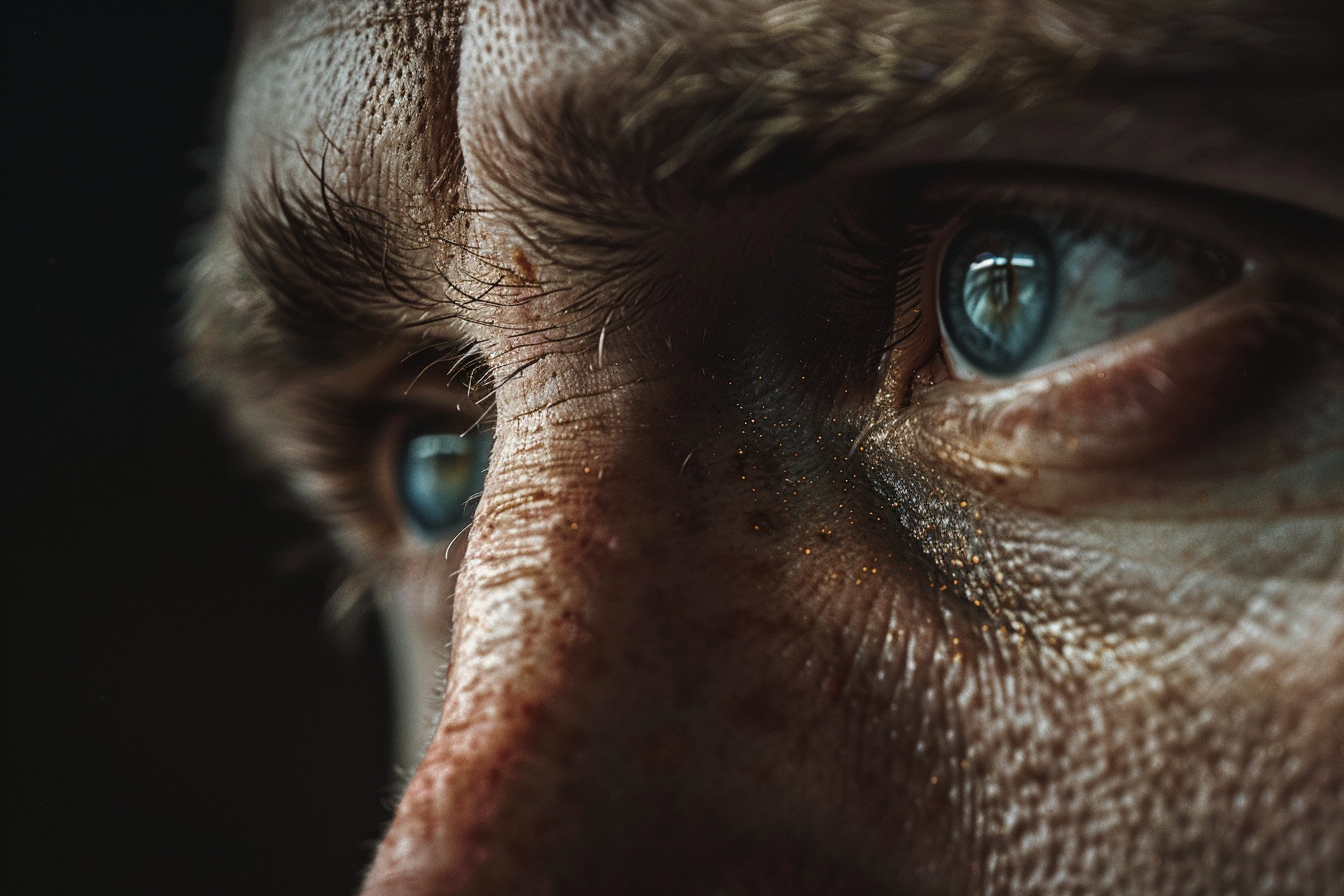
Um homem olhando em choque | Fonte: Midjourney
Fiquei paralisado, olhando para o fantasma da minha ex-esposa morta, vestida em um vestido de noiva branco.
Natalie se virou para sorrir para os convidados, mas seus olhos se arregalaram em choque quando ela me viu ali com nossa filha.
Então ela saiu correndo.

Uma noiva correndo na praia | Fonte: Midjourney
Stefan chamou por ela, perplexo, mas ela já tinha ido embora. Eu fiquei de pé, com as pernas tremendo.
“Fique com a tia Linda”, disse a Emma, guiando-a até a irmã de Stefan antes de seguir Natalie.
Encontrei-a num corredor, trêmula, pálida, agarrada ao seu vestido de noiva.
“Você está morto”, sussurrei, minha voz falhando. “Eles me disseram que você estava morto.”
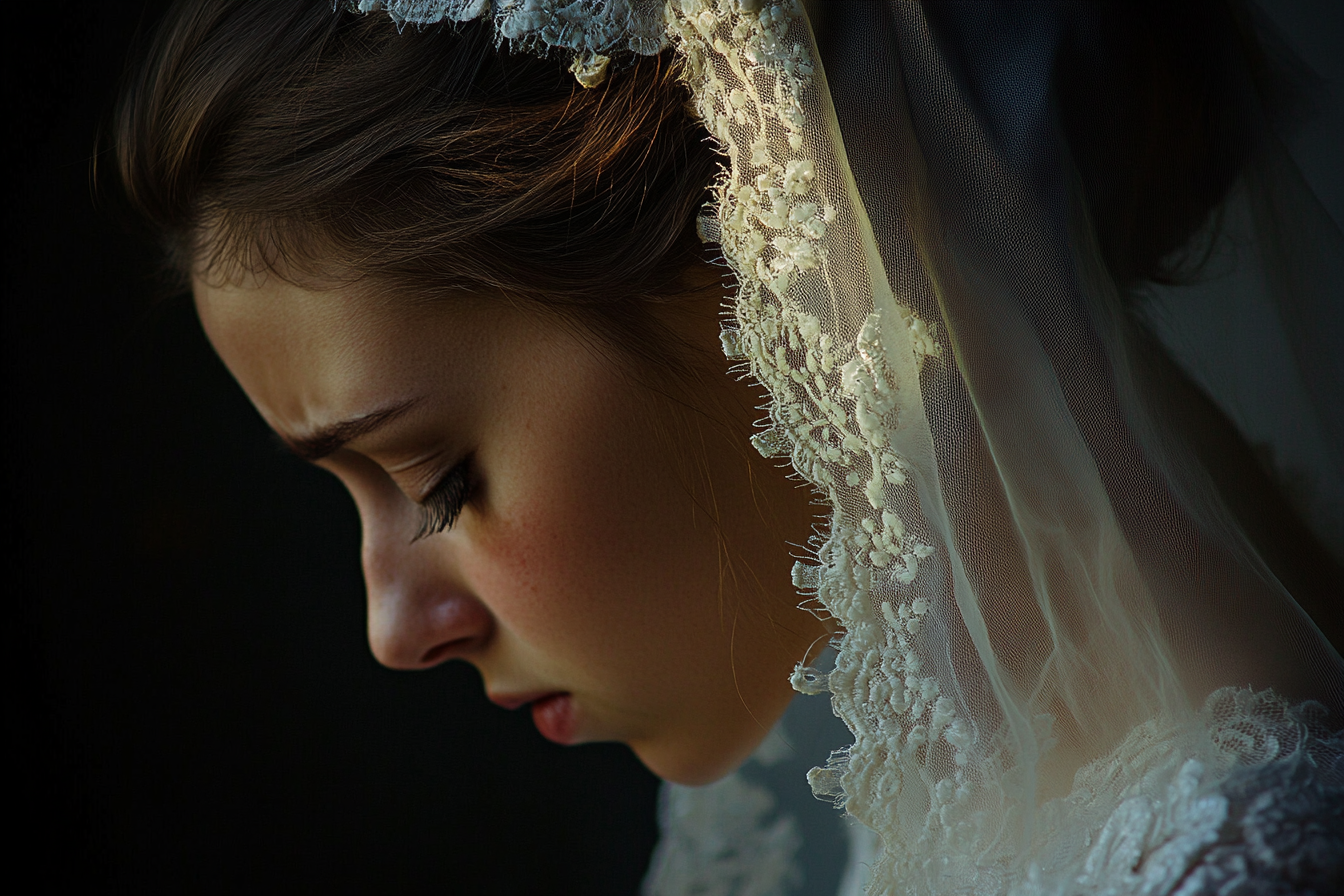
Uma noiva emocionada abaixando a cabeça | Fonte: Midjourney
Ela gaguejou: “E-eu não sabia que te disseram isso.”
Eu ri, vazia. “Eu implorei para que me deixassem ver seu túmulo. Passei anos sofrendo por você, Natalie.”
Lágrimas se acumularam em seus olhos. “Eu só queria uma saída… para começar do zero. Meu pai organizou tudo.”
A fúria cresceu dentro de mim.
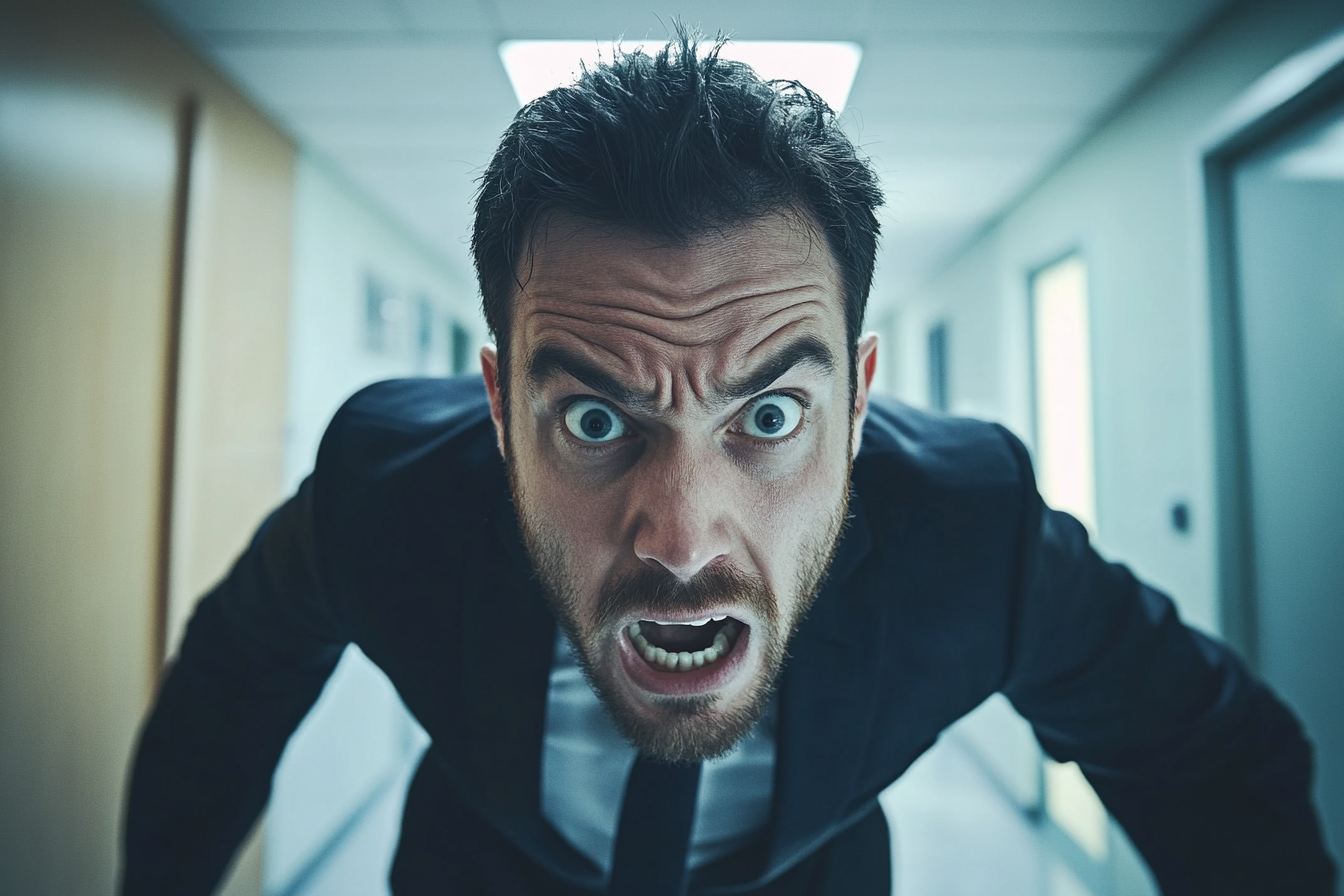
Um homem furioso em um corredor | Fonte: Midjourney
“Você me deixou chorar por você. Eu tive que contar à nossa filha que a mãe dela estava morta! Uma coisa era abrir mão dos seus direitos parentais, mas isso? Que diabos?”
Natalie estremeceu. “Achei que ela ficaria melhor sem mim.”
Stefan apareceu, parecendo tenso e confuso. “O que está acontecendo? Por que minha noiva simplesmente saiu correndo do nosso casamento? E por que vocês dois estão brigando?”

Um homem confuso e preocupado | Fonte: Midjourney
Virei-me para ele. “Porque há cinco anos, ela me deixou e à nossa filha. E então a família dela me disse que ela estava morta.”
“O quê?” O rosto de Stefan perdeu a cor.
“O pai dela mandou advogados cortarem todos os laços. Então eles me disseram que ela morreu em um acidente de carro. Eu a lamentei. E agora a encontro no altar, se casando com meu melhor amigo.”
Stefan confrontou Natalie. “Diga-me que você não fingiu sua morte.”
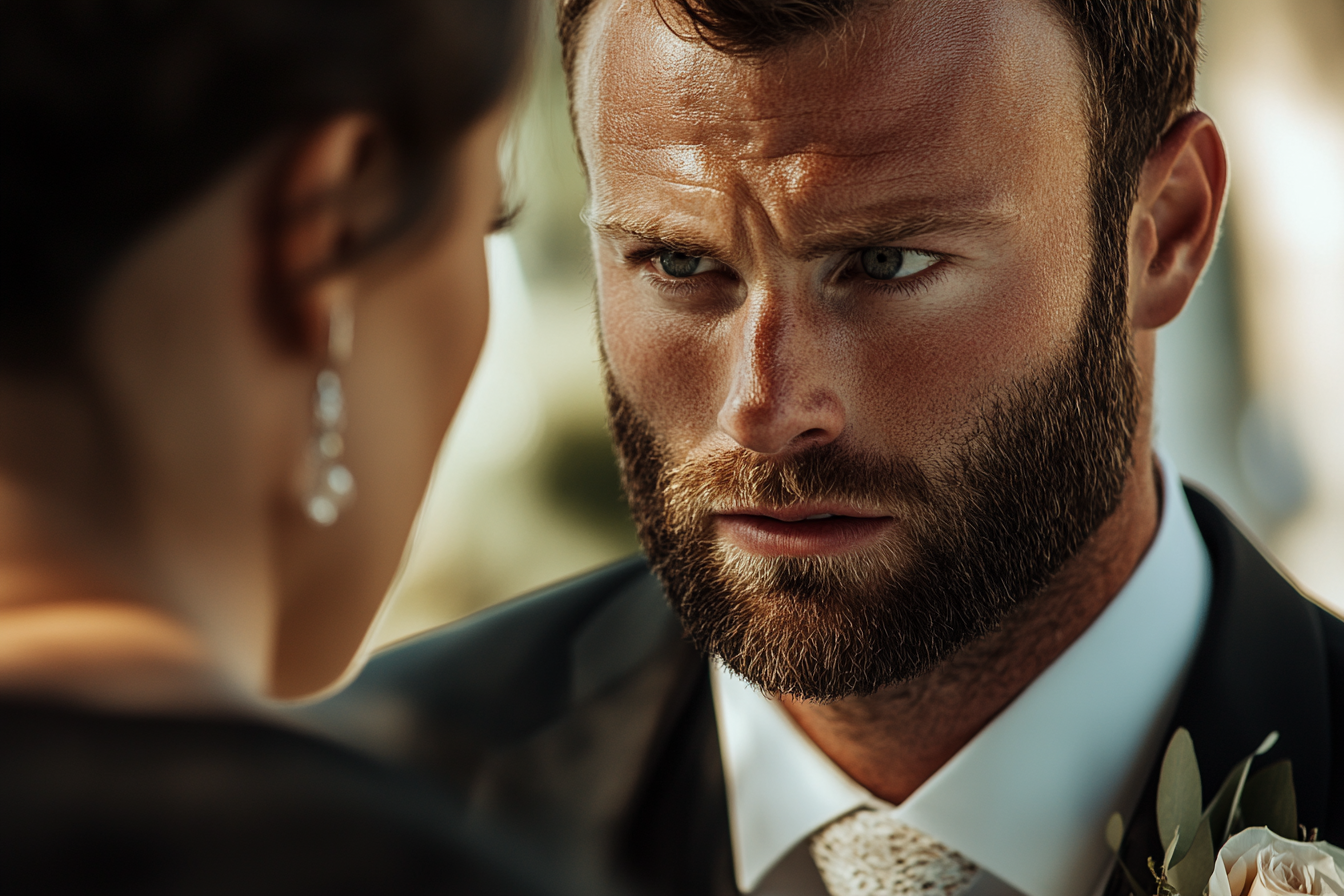
Um homem furioso confrontando alguém | Fonte: Midjourney
Ela não podia negar.
“Meu Deus, Natalie”, Stefan sussurrou, quebrado.
Stefan foi embora, rosto pálido, punhos cerrados. O casamento foi cancelado. Os pais de Natalie apareceram do nada e a levaram embora.
Eles não me disseram uma palavra. Mas eu não os segui. Não dessa vez.
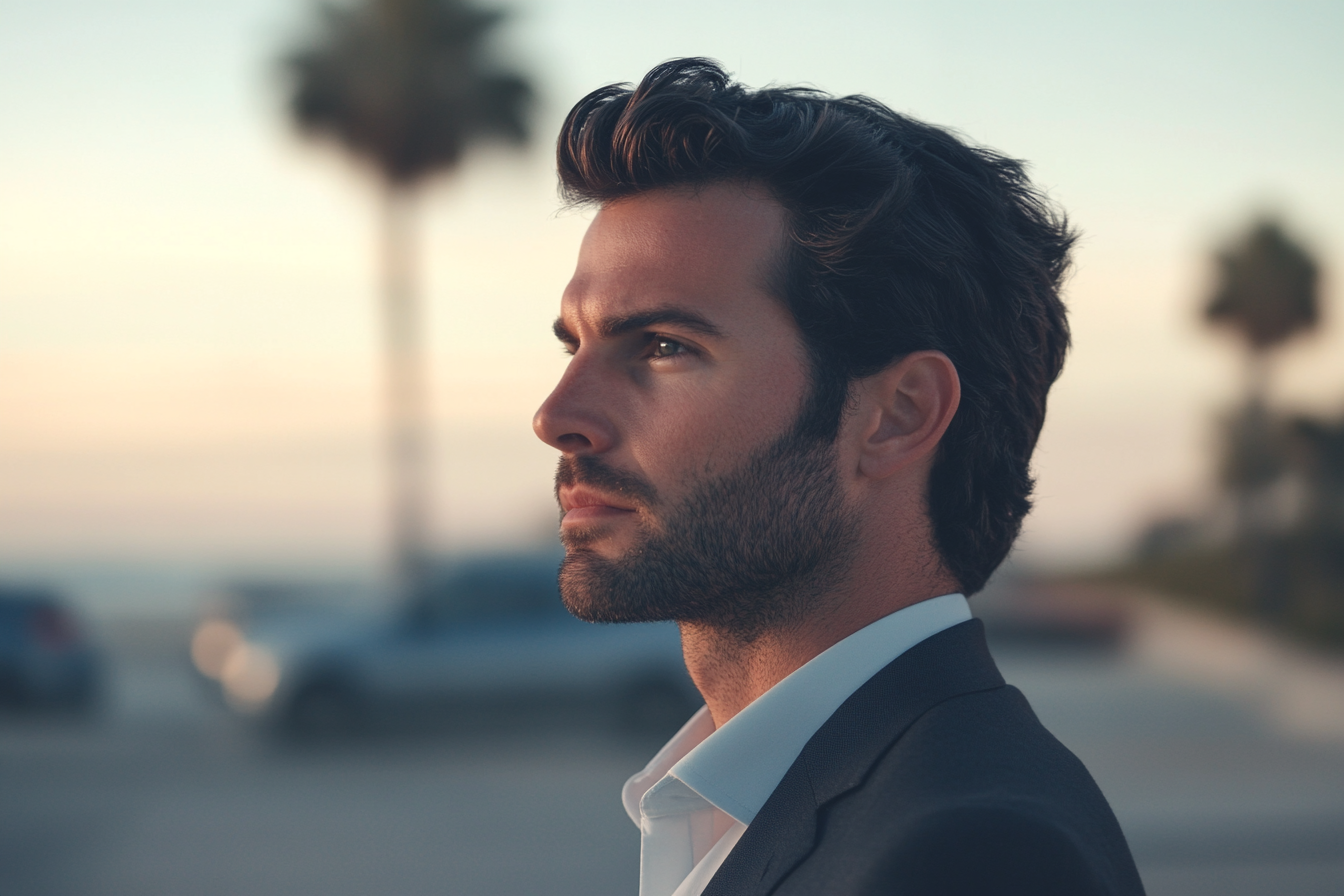
Um homem observando algo com um olhar severo | Fonte: Midjourney
Duas semanas depois, Stefan e eu nos encontramos para beber.
“Ela enganou todo mundo”, ele disse amargamente, olhando para o copo. “Os pais dela nos apresentaram em um evento de caridade no ano passado. Ela nunca mencionou ser casada antes ou ter um filho.”
Eu assenti, mas estranhamente, me senti em paz. “Você não poderia saber.”

Um restaurante estiloso | Fonte: Pexels
“Você está bem?” Stefan perguntou.
Eu considerei a questão. “É, acho que sim. Por anos, eu me perguntei o que fiz de errado e por que ela foi embora. Agora eu sei que não era sobre mim, de forma alguma.”
Percebi que não estava mais quebrada. Eu tinha minha filha e minha carreira de sucesso agora.
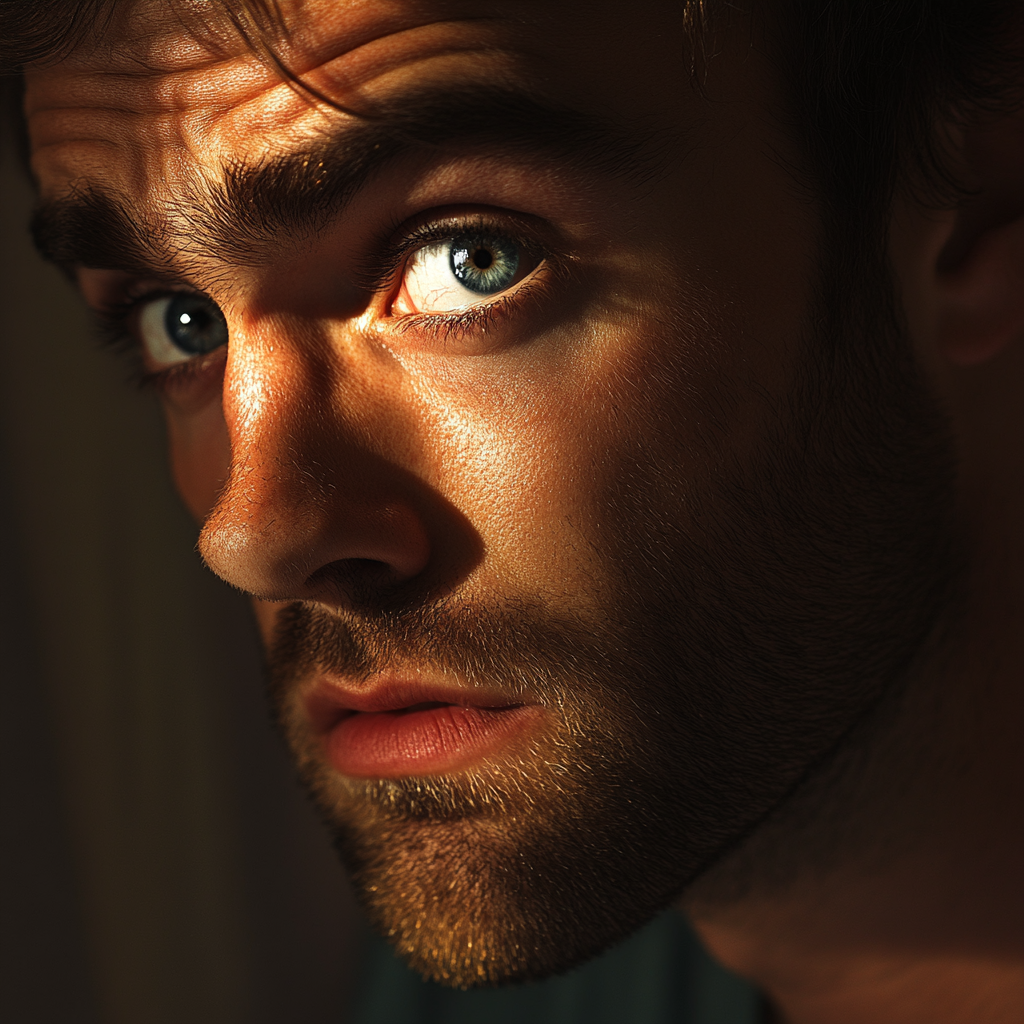
Um homem pensativo | Fonte: Midjourney
Eu tinha construído uma vida apesar dos destroços que ela tinha deixado para trás. E pela primeira vez em cinco anos, eu me senti verdadeiramente, completamente livre.
Fiquei emocionada por finalmente compartilhar meus convites de casamento — completos com uma foto minha e do meu noivo — com meus três amigos mais próximos. Mas em vez de excitação, obtive silêncio. Então todos recuaram, um por um, com desculpas esfarrapadas. Algo estava errado… e eu estava prestes a descobrir o que era.

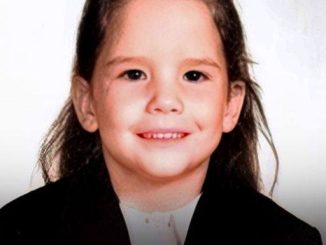
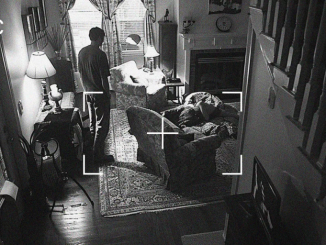
Leave a Reply